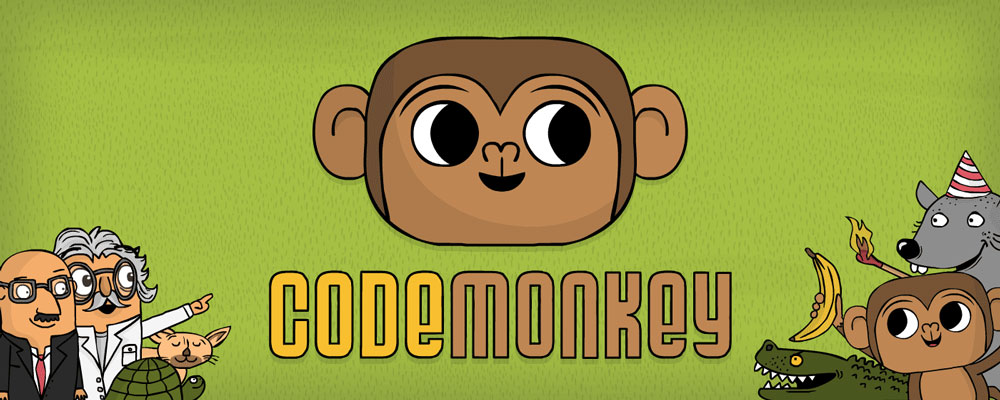What are types of Bugs in Coding
Coding as a concept is on a drastic rise in this century and one of the regions that has taken a quick liking to it is the Middle East & Dubai.
Dubai is rapidly adapting to this new curriculum that enables children to learn coding from a young age. One such company that is growing famous In the region is Code Monkey.
CodeMonkey is a game-based environment where youngsters may learn to code without any prior knowledge. Kids will be able to traverse the programming world with confidence and achievement after completing CodeMonkey’s award-winning coding courses.
CodeMonkey has educational tools for students of all ages and levels of experience. Students learn not only the fundamentals of coding but also how to code in real programming languages in games like CodeMonkeyJr., Banana Tales. Kids will learn important skills for the future while having fun with CodeMonkey!
It takes a lot of testing and tweaking to come up with a fantastic software solution. You’ll very certainly run into error warnings and other development bottlenecks during this procedure. You’ll know the best ways to fix software defects if you understand the different types of bugs you’re likely to face.

Errors That You Could Encounter
Continue reading to learn about some of the most typical errors that you could encounter during the software development process.
#1 Errors in functionality
This is a broad category of error that occurs when software fails to perform as expected. A functional issue occurs when the end user clicks the “Save” button but their entered data is not saved. A software tester may uncover a more precise cause of the issue and reclassify it as a different category of bug after further examination.
#2 Mistakes in syntax
A syntax error occurs in a program’s source code, preventing it from being properly compiled. This is a pretty common issue that happens when there are one or more missing or erroneous characters in the code. A single missing bracket, for example, could result in a syntax mistake.
Compiling programmes usually show where a syntax issue occurred so that the programmer can correct it.
#3 Errors in logic
A logic fault is a flaw in the software’s flow that leads it to function erroneously. This error can cause the application to give inaccurate output, hang, or even crash. Logic mistakes, unlike syntax errors, do not prohibit a programme from compiling.
The infinite loop is a typical logical fallacy. The programme repeats a sequence indefinitely due to badly designed code until it crashes or halts due to external action, such as the user closing a browser window or turning off the power.
#4 Errors in calculation
A calculation error occurs when software delivers an inaccurate value, whether it be one that the end user sees or one that is sent to another programme. This could occur for a variety of reasons:
The value is calculated by the software using the incorrect algorithm.
A data type mismatch exists in the calculation.
The computation or value hand-off to another application was erroneously coded by the developers. While a calculation error might be costly in some situations, such as banking, where an inaccurate calculation can result in a loss of funds, locating the error is usually merely a matter of math.
#5 Bugs at the unit level
Unit-level software errors, according to David LaVine, CEO of RocLogic Marketing and a former engineer, are the most common. They’re also the most straightforward to repair.
After your product has been written, you must test it using unit testing, which entails taking a tiny, logical part of code and ensuring that it runs as intended. Various types of state machine problems, calculation errors, and fundamental logic bugs are frequently discovered here.
“When you’re dealing with a little bit of code that’s within your control,” LaVine explains, “the issues are pretty easy to pinpoint.” “They’re also reasonably simple to replicate because there aren’t many difficult, time-consuming steps.”
#6 Bugs in the system’s integration
When two or more pieces of software from different subsystems interact incorrectly, this type of error occurs. Often, distinct developers write the two sets of code. Even when there is a clear set of specifications for developers to follow, LaVine adds, there is generally some level of interpretation or subtleties that are neglected, resulting in a failed interaction between two pieces of software. “System-level integration errors are more difficult to fix because you’re dealing with multiple pieces of software, so the complexity rises while overall visibility diminishes,” explains LaVine. “Byte-swapping, message parsing, and memory overflow concerns are all common causes of this type of bug.”
#7 Bugs that are out of boundaries
These forms of software problems, according to LaVine, appear when the end user interacts with the product in unexpected ways. This usually happens when a user enters a parameter outside of its intended range, such as providing a much higher or lower number than designed for, or inputting an unexpected data type, such as text where a number should be. “The user may cause the solution to undertake more calculations than it was designed to manage in some circumstances,” LaVine explains.






Recent Comments